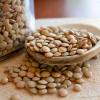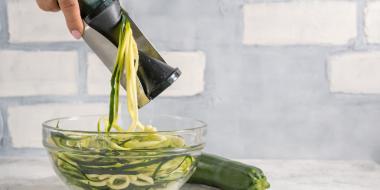Bone broth is a traditional meat stock that is gaining popularity as a method of food preparation – and for good reason, too! Our current broth alternatives are laden with flavour enhancers, sodium, sugar, and genetically modified foods.
Most commercially available products are dehydrated bouillon powder, cubes, and shelf-stable broths. Hundreds of products line our grocery store shelves and the only way to decipher them is to read the labels.
Here are the ingredients from an unnamed brand of bouillon cube:
Salt, monosodium glutamate, hydrogenated cottonseed oil, chicken fat, hydrolyzed soy/corn protein, dehydrated mechanically separated cooked chicken, dehydrated chicken meat, dehydrated chicken broth, autolyzed yeast extract, dehydrated onions & parsley, lactose, water, colour, spices & spice extract, disodium guanylate, disodium inosinate, citric acid, tartaric acid, hydrogenated soybean oil and sulphites.
Let’s review a handful of these additives, many known to pose health issues:
Monosodium glutamate is MSG, a food additive and flavour-enhancer. It is a controversial additive and has been reported to cause headaches, flushing, sweating, tingling, heart palpitations, chest pain, nausea and weakness.
Cottonseed oil, soy protein, corn protein and soybean oil are often genetically modified. (The same goes for meat – animals are often fed GMO feed.) These crops have raised controversy as they are genetically modified to be resistant Roundup, a glyphosate-containing herbicide, so that they can be heavily sprayed. Organic crops are by definition not genetically modified.
Colouring is commonly added to food. Although there are natural colourants available in the market place today, many corporations still opt to use synthetic colours. The most commonly used colours are yellow 5, yellow 6, and red 40, all of which are linked with cancer and other health problems. Luckily you can easily prepare you own food colouring. Use turmeric for yellow and beet juice for red/purple.
Sulphites have been reported to induce a range of adverse clinical effects in sensitive individuals, ranging from dermatitis, flushing, hypotension, abdominal pain and diarrhoea to life-threatening anaphylactic and asthmatic reactions.
At this point, you’re probably wondering if you might be better off making your own broth. You're in luck--we just happen to have a fabulous bone broth recipe handy! Bone broth is full of essential amino acids arginine, glutamine, proline and glycine. According to Dr. Natasha Campbell-Mcbride, the author of Gut and Psychology Syndrome (you may have heard of the “GAPS” diet), stock is simply the best way to nourish the body.
Once you start preparing this affordable, flavourful, and nourishing broth filled with easily absorbed nutrients with super-healing power, you will never look back.
Bone Broth Tips
- Go to your local butcher and buy some bones--any type will do. Check the freezer section or ask the butcher to prepare some for you.
- All meat has a unique flavour profile and specific nutritional benefits. Look for grass-fed or certified organic bones full of marrow and fat.
- Chicken feet have a lot of cartilage that helps with the repair of muscle tissue, collagen, and cartilage.
- Fish heads contain the thyroid and have been used in broth over centuries in many cultures for glandular support.
Basic bone broth recipe
Use as a stock base for soups, stews, or drink as is, as regularly as you desire.
Ingredients
- 2 lbs bones from healthy origins (i.e. grass-fed beef bones, organic chicken carcass)
- 2 chicken feet for added gelatin
- 1 onion & peel
- 2 carrots
- 2 stalks of celery
- 2 garlic cloves
- 2 tbsp. apple cider vinegar (with mother)
- 1 bunch vegetable stems
- 10 peppercorns
- 1 bay leaf
- 1 lemon (cut in half)
- 1 tbsp iodized sea salt
Directions
- Place everything in a slow cooker and pour filtered water on top.
- Once it reaches a boil, reduce the heat to a simmer.
- Simmer for a minimum of 2 hours, and up to 48 hours. (Longer cooking times help to extract more calcium and cofactors out of the bone.)
- Strain using a fine metal strainer and, when cool, store in the fridge for up to 5 days.
*Originally published January 27, 2016






